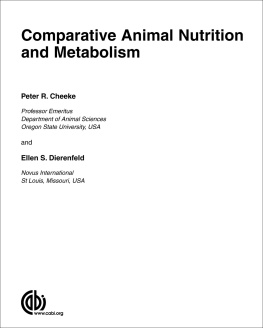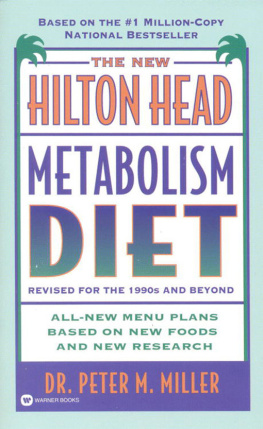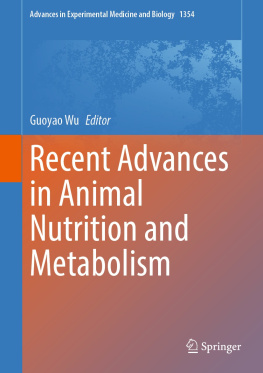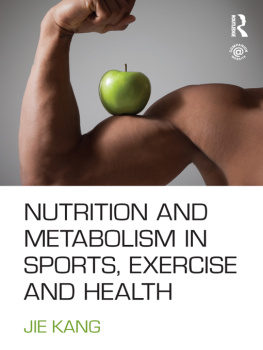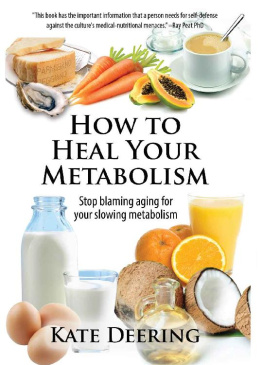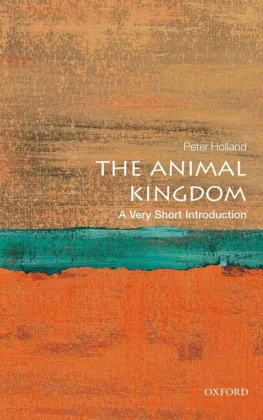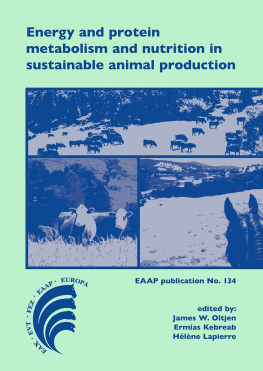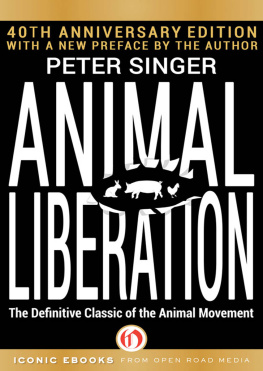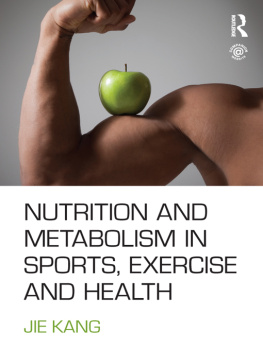Peter Robert Cheeke - Comparative Animal Nutrition and Metabolism
Here you can read online Peter Robert Cheeke - Comparative Animal Nutrition and Metabolism full text of the book (entire story) in english for free. Download pdf and epub, get meaning, cover and reviews about this ebook. year: 2010, publisher: CABI, genre: Science. Description of the work, (preface) as well as reviews are available. Best literature library LitArk.com created for fans of good reading and offers a wide selection of genres:
Romance novel
Science fiction
Adventure
Detective
Science
History
Home and family
Prose
Art
Politics
Computer
Non-fiction
Religion
Business
Children
Humor
Choose a favorite category and find really read worthwhile books. Enjoy immersion in the world of imagination, feel the emotions of the characters or learn something new for yourself, make an fascinating discovery.
- Book:Comparative Animal Nutrition and Metabolism
- Author:
- Publisher:CABI
- Genre:
- Year:2010
- Rating:4 / 5
- Favourites:Add to favourites
- Your mark:
- 80
- 1
- 2
- 3
- 4
- 5
Comparative Animal Nutrition and Metabolism: summary, description and annotation
We offer to read an annotation, description, summary or preface (depends on what the author of the book "Comparative Animal Nutrition and Metabolism" wrote himself). If you haven't found the necessary information about the book — write in the comments, we will try to find it.
Comparative Animal Nutrition and Metabolism — read online for free the complete book (whole text) full work
Below is the text of the book, divided by pages. System saving the place of the last page read, allows you to conveniently read the book "Comparative Animal Nutrition and Metabolism" online for free, without having to search again every time where you left off. Put a bookmark, and you can go to the page where you finished reading at any time.
Font size:
Interval:
Bookmark:
Comparative Animal Nutrition and Metabolism
Peter R. Cheeke
Professor Emeritus
Department of Animal Sciences
Oregon State University, USA
and
Ellen S. Dierenfeld
Novus International
St Louis, Missouri, USA

CABI is a trading name of CAB International
CABI Head Office | CABI North American Office |
Tel: +44 (0)1491 832111 | Tel: +1 617 395 4056 |
Peter R. Cheeke and Ellen Dierenfeld 2010. All rights reserved. No part of this publication may be reproduced in any form or by any means, electronically, mechanically, by photocopying, recording or otherwise, without the prior permission of the copyright owners.
A catalogue record for this book is available from the British Library, London, UK.
Library of Congress Cataloging-in-Publication Data
Cheeke, Peter R.
Comparative animal nutrition and metabolism / Peter R. Cheeke and Ellen S. Dierenfeld.
p. cm.
Includes bibliographical references and index.
ISBN 978-1-84593-631-0 (alk. paper)
1. Animal nutrition. 2. Metabolism. I. Dierenfeld, Ellen Sue, 1956- II. Title.
SF95.C4634 2010
636.08932--dc22
2009051950
ISBN-13: 978 1 84593 631 0
Commissioning editor: Sarah Hulbert
Production editor: Kate Hill
Typeset by SPi, Pondicherry, India.
Printed and bound in the UK by Cambridge University Press, Cambridge.
23 Nutrition and Immunity in Ruminants
N.E. Forsberg, Y. Wang, S.B. Puntenney and J.A. Carroll
Guest Contributors for
J.A. Carroll, USDA-ARS, Livestock Issues Research Unit, Lubbock, Texas, USA; jeff.carroll@ars.usda.gov
N.E. Forsberg, OmniGen Research, Corvallis, Oregon, USA; nforsberg@omnigenresearch.com
S.B. Puntenney, OmniGen Research, Corvallis, Oregon, USA; punten@msn.com
Y. Wang, OmniGen Research, Corvallis, Oregon, USA; yqwang72@gmail.com
This book has had a long gestation period. In 1969, I began my teaching career at Oregon State University with a class called Comparative Nutrition. I concentrated on comparative aspects of domestic animals: ruminants, monogastrics and non-ruminant herbivores. Several students suggested that my notes could be organized into a book quite readily. I made a small effort to do this in the early 1970s, but other pressures on a young faculty member resulted in this project falling by the wayside. In the mid-1980s I started again, but got sidetracked writing another book. Finally, in the late 1990s, I decided to get serious and tackle a book on comparative nutrition. By this time, it had become apparent to me that there were many interesting nutritional strategies of wild as well as domestic animals. To assist in the area of wild animal nutrition, I sought the collaboration of Dr Ellen Dierenfeld, one of the worlds leading authorities on this subject. I wanted to take a systems approach to this subject. Virtually all animal nutrition texts deal with each nutrient in order, one after another. Typically, there will be a major section on vitamins, starting with vitamin A, then vitamin D, followed by vitamin E, and so on, with the process repeated for minerals. I wanted to consider the nutrients in the context of how they function. For example, minerals and vitamins involved in regulation of energy metabolism are discussed in the context of their roles in metabolic processes. My perception is that it may be more interesting to students to encounter nutrients in their functioning roles, rather than just going down a list. This approach has some advantages, but, Ive discovered, also has some disadvantages. In some cases, diverse functions of a nutrient make it difficult to decide where the major discussion of it should be. Hopefully, my decisions on subject placement make sense, and will facilitate whole animal integration of nutritional principles by students.
Nutrition is basically applied biochemistry. Paradoxically, throughout my career, Ive noted that many students interested in majoring in animal nutrition have a profound dislike of biochemistry. Ive endeavoured to provide a strong biochemical basis for nutritional principles, and hope that by showing the relevance of biochemistry to the full understanding of nutrition, it will be somewhat more palatable to animal science and veterinary students than traditional biochemistry courses. Application of biochemical principles to domestic and wild animals should lead to a greater student appreciation of the discipline of biochemistry, which sometimes leaves the impression that life consists only of giant rat liver cells. Im not intending to produce a watered-down biochemistry course, but hope that by stressing the relevance of biochemistry to animal nutrition, students will find traditional biochemistry courses more palatable. Some things are discussed in more detail than the average reader might need. It is intended that the book can serve as a primary source of nutritional information. For example, if in the feed industry one encounters a form of vitamin E called RRR--tocopherol, and hasnt a clue what that means, the answer can be found herein.
I have jettisoned certain nutrition classics; just because we learned certain things in nutrition classes years ago does not mean that current students need to. For example, a pantothenic acid deficiency causes goose-stepping in pigs. Do 21st century students really need to be able to answer What nutrient deficiency causes goose-stepping in pigs? Pantothenic acid literally means an acid found everywhere. When was the last time that there were goose-stepping pigs in a commercial pig operation? As Scott et al. (1982) indicate for poultry, Pantothenic acid deficiency in sufficient severity to cause characteristic symptoms has not been demonstrated to occur under field conditions. So I have resisted the temptation of assuming that everything that was taught when I was a student must be included.
In his book, Wildlife Feeding and Nutrition, Charles Robbins (1993) noted in his Preface, Unfortunately, although many of the principles of nutrition could be learned by wildlife students taking the standard animal nutrition course taught in the animal science department, most of these departments have chosen virtually to ignore the nondomesticated and nonlaboratory species. Our book is an effort to address this need.
Large numbers of animal science students are in pre-veterinary programmes. Exotic animal and wildlife medicine are of increasing importance in the veterinary field. Many zoos and animal parks now employ animal nutritionists, such as co-author Dr Ellen Dierenfeld who has coordinated the nutrition programmes at the St Louis Zoo and the Bronx Zoo. Thus there are many employment options involving non-traditional species for animal science and veterinary graduates, and these opportunities are steadily increasing. Global climate change, increasing human populations in developing countries, habitat loss, and numerous other factors are putting many animals on an endangered status. Professionals with an adequate background in comparative animal nutrition will play vital roles in preservation of endangered species, especially in wildlife conservation parks and preserves involving captive animals. Loss of a single animal from a nutritional disorder could mean irreparable damage to an extremely narrow gene pool.
Next pageFont size:
Interval:
Bookmark:
Similar books «Comparative Animal Nutrition and Metabolism»
Look at similar books to Comparative Animal Nutrition and Metabolism. We have selected literature similar in name and meaning in the hope of providing readers with more options to find new, interesting, not yet read works.
Discussion, reviews of the book Comparative Animal Nutrition and Metabolism and just readers' own opinions. Leave your comments, write what you think about the work, its meaning or the main characters. Specify what exactly you liked and what you didn't like, and why you think so.

